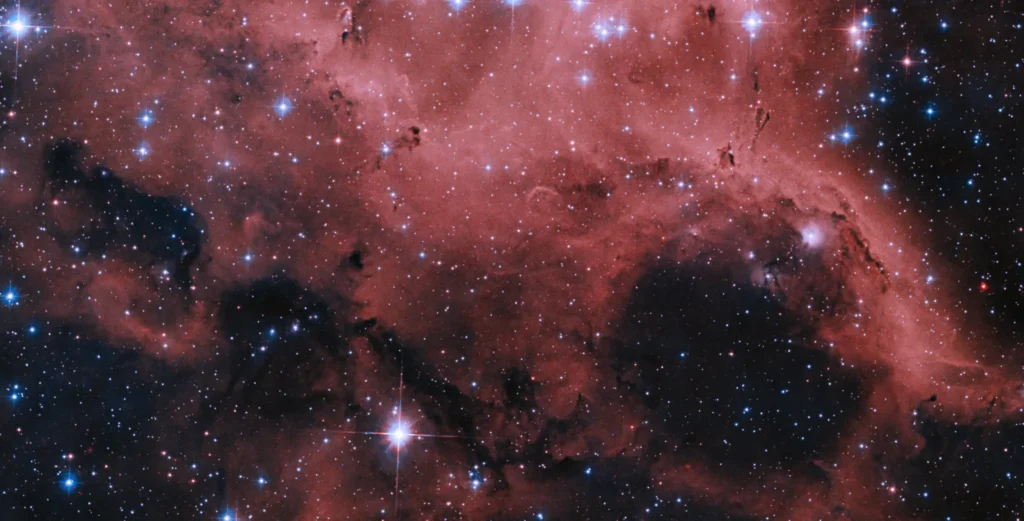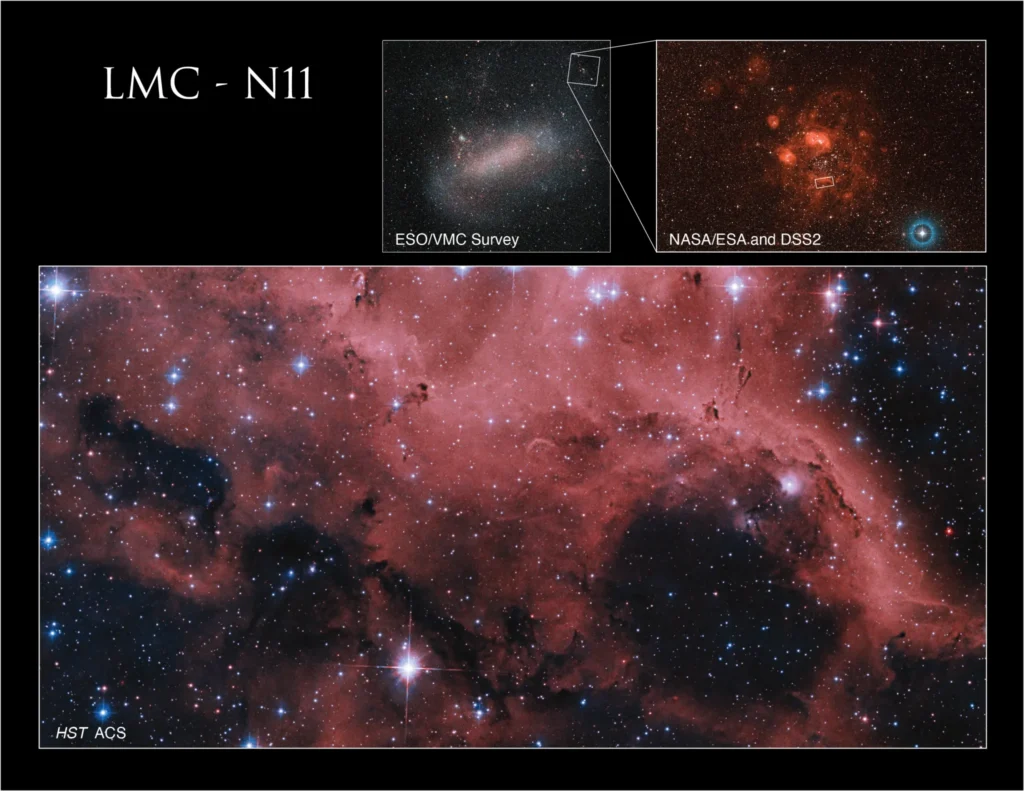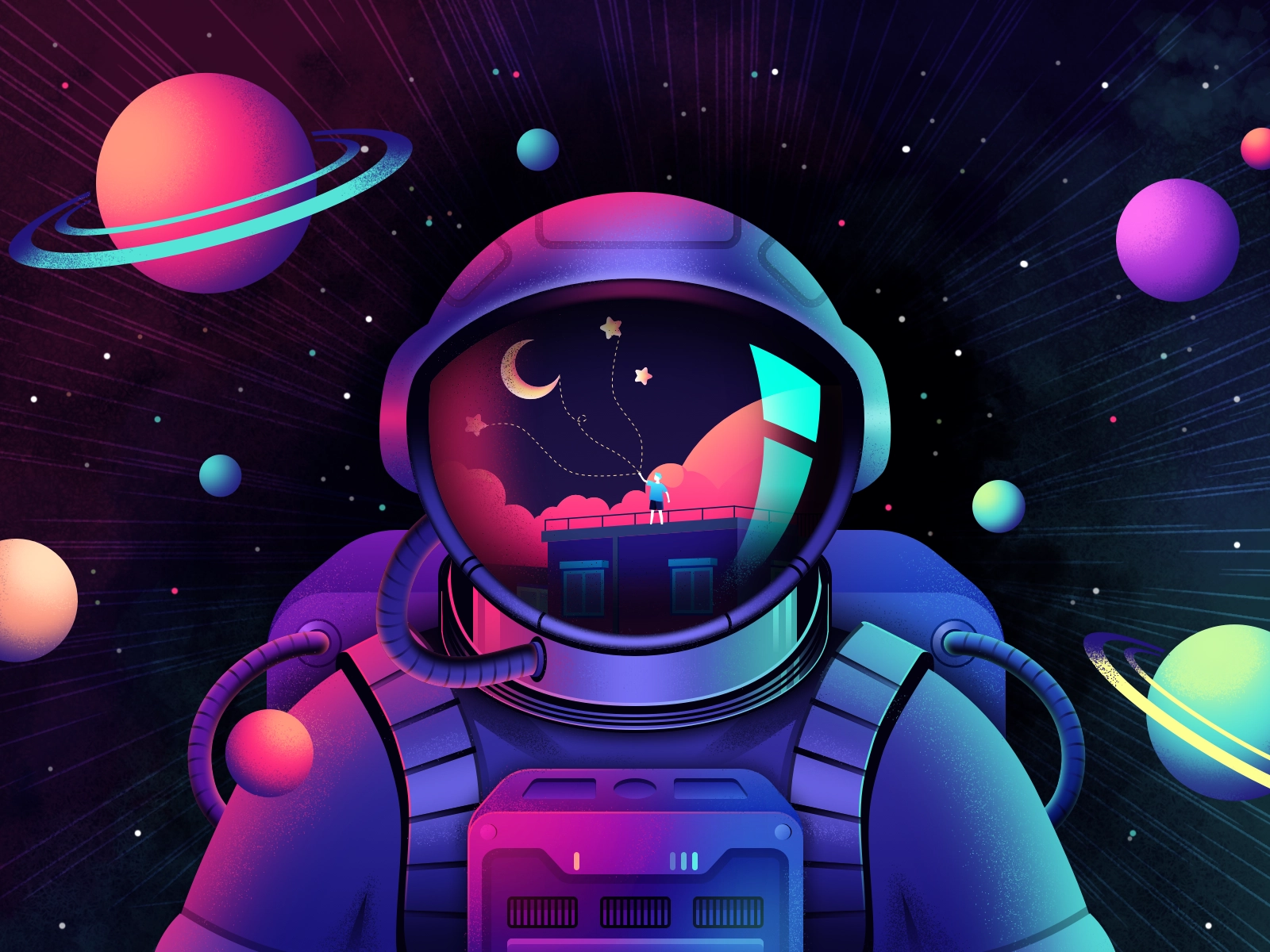NASA has published a new image taken by the Hubble telescope. It shows a bubbling region located in one of the Milky Way’s closest neighbors.

The Hubble photo captures a cluster of emission nebulae known as N11. It is located 160,000 light-years away from Earth in the Large Magellanic Cloud, a dwarf galaxy that is a satellite of our Milky Way.
Despite its small size, the Large Magellanic Cloud is very active in forming new stars. Its star formation rate is much higher than that of the Milky Way. The most famous stellar home of the Large Magellanic Cloud is the famous Tarantula Nebula. N11 holds the honorable second place.

N11 is about a thousand light-years across. The nebula’s sprawling filaments weave together like sparkling candy floss. These clouds of gas are ionized by a growing host of young and massive stars, giving the entire region a cherry-pink color. The Hubble image also shows colossal cavities inside N11. These bubbles were formed by the birth and death of stars. The powerful stellar winds of newborn luminaries and supernovae flares created cavities in the surrounding gas-dust clouds.
Regions like N11 have long attracted the attention of astronomers. The fact is that their chemical composition is similar to the giant regions of star formation that existed just a few billion years after the Big Bang. So scientists are using them as a kind of natural laboratories to reveal the secrets of star formation in the early Universe.
Earlier we told you about the top “cat” nebulae.
According to NASA


